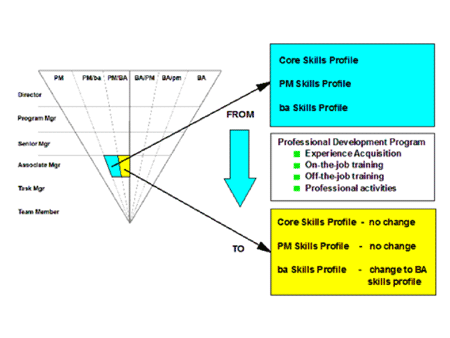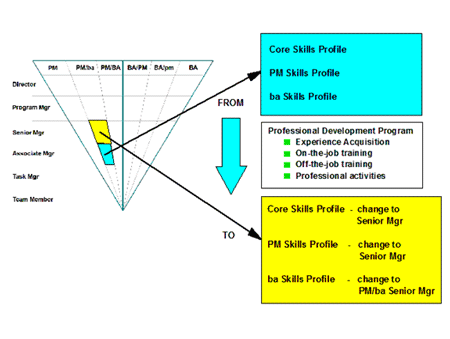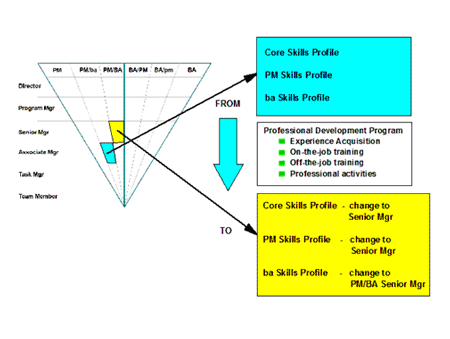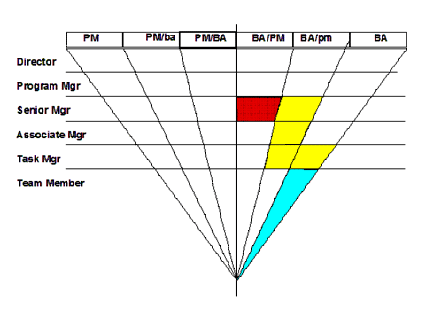It has become the norm for organizations to experience projects with higher costs than originally expected, slipped schedules and unfulfilled requirements. Numerous studies detail dismal project results. Also, government reports and company case studies provide countless specifics of projects with unsatisfied stakeholders. While the studies, reports and case studies outline causes of project failure, they do not show the relationship between properly applied project management practices and project outcomes. Unfortunately, this type of research has yet to come to fruition in the project management world—until now.
There is a strong argument for applying proactive project management through an increase in project management competencies and by instituting better project management practices. By exploring the implications of project performance, we can gain a solid understanding of the relationship between an individual’s knowledge and skills and the application of project management practice areas. This examination can help to identify the drivers of successful projects.
The research discussed in this article involved analyzing data from databases maintained by two distinct organizations. The PMAppraise® database contains knowledge and skill assessments of IT project management professionals working for large and mid-sized companies across all industry sectors located throughout the world. The online assessment, maintained by ESI International, a project management learning company, consists of 120 multiple-choice questions covering the nine areas of A Guide to the Project Management Body of Knowledge (PMBOK® Guide).
Independent Project Analysis, Inc. (IPA), a project benchmarking company, operates the Project Evaluation System® (PES®) that maintains data and “scores” of projects they’ve analyzed. IPA’s benchmarking methodology measures the effectiveness of a client company’s practices and procedures in planning, defining, engineering, constructing, and initiating projects.
U.S. Project Failure.
High rates of project failure—particularly among IT projects—have made headlines in recent years. The most widely quoted study comes from The Standish Group. Their 2003 CHAOS Chronicles revealed:
- Project success rates represent about 34 percent of all projects.
- Project failures account for 15 percent of all projects.
- Challenged projects (cost or schedule overruns) account for 51 percent of all projects.
- The lost dollar value for U.S. projects in 2002 is estimated at $38 billion, with another $17 billion in cost overruns, for a total project waste of $55 billion against $255 billion in project spending (The Standish Group 2003).
The CHAOS Chronicles are just one data point among numerous studies and reports on project failure. By looking at other studies, we can gain an appreciation of the depth and breadth of the problem. A summary of some of the more prominent publicized studies and reports is presented in the chart below.
Organization-specific studies bring the problem into even greater focus. An audit of the U.S. Federal Bureau of Investigation (FBI) by the U.S. General Accounting Office (GAO) revealed that the department did not effectively manage its IT investments and spent hundreds of millions of dollars on projects with little assurance they would deliver their intended benefits (U.S. Department of Justice Audit Report 2002). The GAO studied 226 IT projects, totaling $6.4 billion, from 24 federal agencies. The projects were deemed critical, as a delay or failure would impact the essential business functions of the agency. The GAO revealed about 35 percent (79) of the projects had a performance shortfall where they did not meet one or more of the following criteria:
- establishing clear baselines,
- maintaining cost and schedule variances within 10 percent,
- assigning a qualified project manager,
- avoiding duplication with other projects (2006).
Problems with IT projects also have been detailed at the state level. An audit by the State of Virginia of 15 major IT projects revealed that at least $75 million has been wasted on failed development efforts, with an additional $28 million incurred in cost overruns (Joint Legislative Audit and Review Commission of the Virginia General Assembly 2003). The State of Texas also reported similar problems. Of 48 large-scale projects reviewed, project delivery delays averaged 14 months, with cost overruns exceeding $352 million. Contributing factors included:
- a general lack of project-level quality control,
- poor project management,
- high project complexity (Texas State Auditor’s Office 2003).
The State of Wisconsin reviewed 184 IT projects totaling around $292 million that have been started or completed since 2004, and found troubled projects have cost the state over $122 million. The report cited a lack of project management and oversight as the main cause of troubled projects (2007)
A high IT project failure rate even led one state legislature to take a highly unusual measure. In 2006, the Colorado State Legislature passed a law requiring the state government to develop policies on best practices and the verification of project managers and analysts. The requirement affects major automation system development projects (Digest of Bills 2006).
International Project Failure
Project failure is not limited to the United States. The United Kingdom’s Office of Government Commerce (OGC) reported the cost of over-budget government IT projects exceeded £1.5 billion over a six-year period (Computing 2003). More recently, a study specifically examining IT project management indicated that one in 10 IT projects were abandoned, 75 percent were challenged (projects completed and operational, but over budget, time and/or lacking critical features), and only around 15 percent were successfully completed on time, within budget, and with all features and functions performing as specified. The study, commissioned by Computer Weekly, is based on data from 1,500 practicing IT project managers across the UK public and private sectors (The Fire Brigades Union, January 21, 2005).
KPMG Information Risk Management found that in 2002, 59 percent of the organizations in the Asia-Pacific region experienced at least one project failure at an average cost of $8.9 million. This percentage corresponds to other regions (Europe, the Americas and Africa) where 56 percent of the organizations experienced at least one project failure at an average cost of $11.6 million (KPMG International 2003).
In mid 2007, the Economist Intelligence Unit published the results of their survey of 145 senior global executives from different industries on their current and planned IT projects. The results revealed 20 percent of the executives reported that over half of their IT projects started in the past two years were late or over budget. In addition, only 13 percent of the executives felt their IT projects had delivered the promised features and functions. Poor project management was attributed as the primary cause for IT project problems.
Studies on the Cost of Project Failure
|
Study
|
Year
|
Cost
|
|
U.S. Dept. of Justice (FBI)
|
2002
|
“Hundreds of millions of dollars” (total)
|
|
KPMG (Pacific – Asia)
|
2002
|
$8.9 million (average per project)
|
|
State of Virginia
|
2003
|
$103 million (total)
|
|
State of Texas
|
2003
|
$352 million (total)
|
|
Office of Government Commerce (U.K.)
|
2003
|
£1.5 billion (total)
|
|
Standish (CHAOS)
|
2003
|
$55 billion (total)
|
|
KPMG (Europe, Asia, Americas)
|
2003
|
$11.6 million (average per project)
|
|
Computer Weekly (U.K.)
|
2005
|
Not Available
|
|
U.S. General Accounting Office
|
2006
|
Not Available
|
|
State of Wisconsin
|
2007
|
$122 million (total)
|
|
Economist Intelligence Unit
|
2007
|
Not Available
|
What Can be Done?
As we’ve noted, numerous studies reveal the unacceptable high rates of project failure among IT projects worldwide. Project failure can be expensive, cause significant delays, and deliver results less than the stakeholders’ stated expectations. In addition, it can have very negative consequences for the reputation of the company and the project manager in charge.
It is no surprise that companies and government entities are looking for ways to respond to the problem. Remedial actions include:
- increasing oversight of IT projects,
- instituting professional requirements for project managers,
- placing a greater emphasis on complying with established project management procedures and techniques,
- purchasing and implementing software tools.
Are these the right actions to take? In some cases they probably are and in other cases they might not be. Also, which corrective action is most appropriate for your organization? In other words, when is it best to institute greater oversight and when is purchasing a software tool right? There are costs associated with each remedial action, so implementing all of them at once can be very difficult and would probably be overkill.
The Value of Training and Following Best Practices
Fortunately, the research from the PMAppraise® and PES® databases suggests a compelling solution organizations should consider to increase the probability of project success: training in project management best practices.
Remember the previously cited research by the Economist Intelligence Unit? It revealed the lack of project management skills among the IT staff to be the primary obstacle to improving IT project management performance.
Training is one of the chief methods for improving a project manager’s ability to implement a successful project. It should be viewed as an investment, not an expense
Research implies that companies providing training to their project managers appear to increase an organization’s chance of project success. As with any investment, if the returns outweigh the costs, there is a positive return on the investment.
The PES database reveals that not applying proper project management techniques can result in very serious outcomes in terms of significantly higher costs and substantial schedule delays. The PES data reveals, for example, that projects with a well-defined Project Execution Plan (PEP) shorten the project duration by 14 percent while decreasing cost growth by 17 percent, compared to a project with a less well-defined PEP.
Technology selection is another practice adding value. When the practice is used, cost growth decreases by 15 percent. Also, when projects had definitive risk plans, schedule slip improved by 12 percent compared to those projects with less than definitive plans.
The PMAppraise results show a substandard average score for each of the assessment areas. Therefore, it is no surprise to learn that project practices and techniques are not being applied and that project failure rates are so high. It follows that increasing a project manager’s knowledge and skills base will empower him or her to apply proven project management procedures and techniques. Taking such a proactive approach should result in improved project outcomes.
J. LeRoy Ward, PgMP, PMP, Executive Vice President, ESI International, is responsible for ESI’s worldwide product offerings and international partnerships. Ward has authored several articles and publications including Project Management Terms: A Working Glossary and PMP® Exam Challenge! He speaks frequently on project management and related topics at professional association meetings and conferences around the world. He is a member of numerous professional associations including the International Project Management Association and the Project Management Institute. www.esi-intl.com




